TL;DR
You can plan a modern landscaping and hardscaping design in minutes, price it clearly, and avoid costly do-overs by visualizing first. ReimagineHome.ai lets you test stone patios, walkway ideas, privacy planting, and lighting so you commit only when the plan feels right.
25–30% profit margins are achievable in hardscaping when scope, pricing, and communication are dialed in

Visualize your exterior layout instantly with intuitive digital tools like ReimagineHome.ai.
Try your own exterior layout instantly on ReimagineHome.ai: https://www.reimaginehome.ai/?utm_source=blog At a glance: - Landscaping ideas that stick: visualize stone patios, terrace levels, retaining walls, and garden design options before you build. - Hardscaping design without regret: compare exposed concrete, pavers, and natural stone for your pool and patio design. - Honest pricing and scope: use progress payments (20% to secure, 20% on start, balance across milestones) to protect everyone. - Scheduling that works: book 4–8 weeks out to absorb surprises and maintain quality. - Smart marketing: clear local naming and authentic photos still drive organic discovery and curb appeal inspiration. Modern landscaping ideas for small front yards, backyard makeover plans, and walkway ideas work best when two things happen first: you see the design, and you understand the build. Visuals reduce second‑guessing; clarity reduces change orders. Use both.
4–8 weeks is the ideal booking window to keep projects on time (and clients happy)
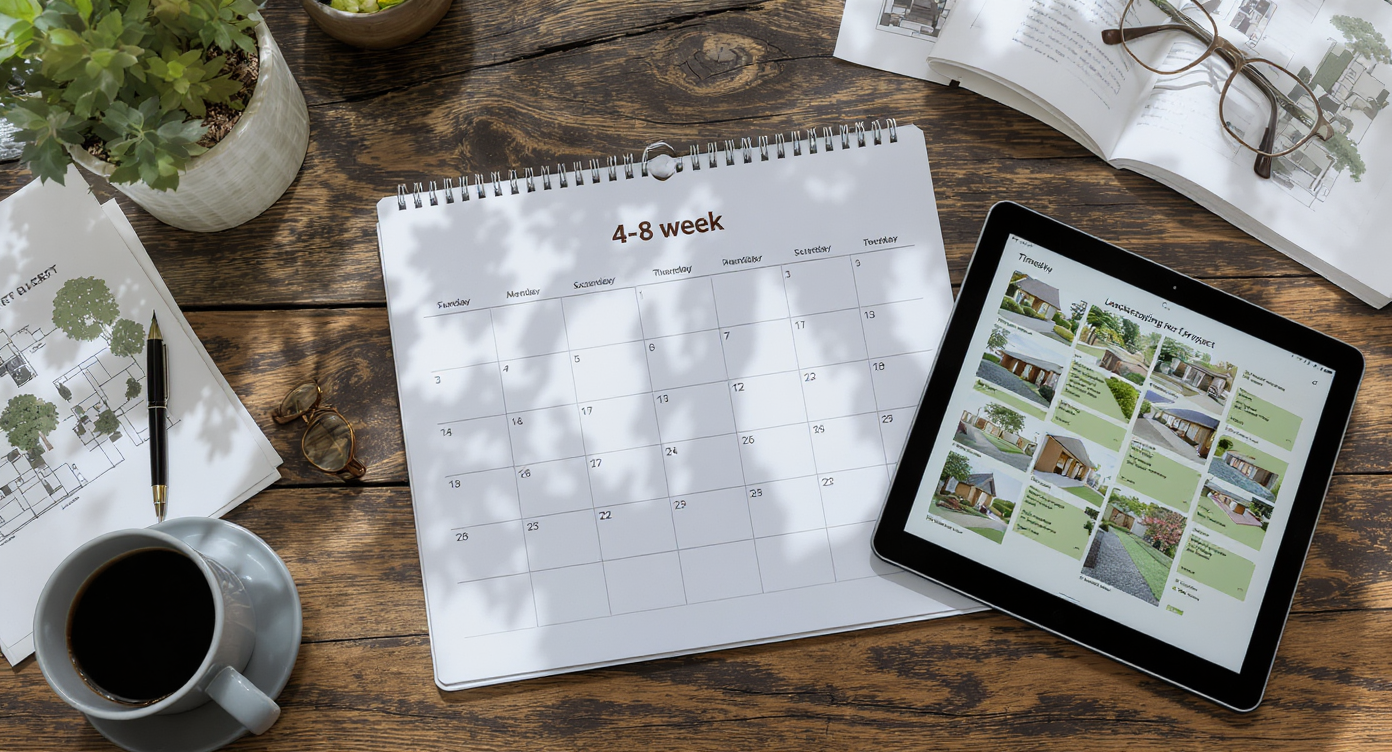
Booking your outdoor project 4–8 weeks ahead ensures quality and satisfaction.
Outdoor living succeeds or fails on planning, not luck. Most homeowners feel stuck on three fronts—what to build, how much it should cost, and who can deliver. Here’s the design‑forward way through: - Plan with visuals: A stone patio, a fire pit circle, a 36–48 inch primary path, and layered privacy planting look different at your house than in a feed. Visualize first, then price. - Scope like a builder: Treat your yard like a small construction site—grading, drainage at 1–2% away from the house, base prep (4–6 inches for walks; 8–12 inches for driveways), materials, and finishes. - Price with integrity: For projects over $10k, progress payments keep momentum and cash flow aligned with work in place: 20% one week before start, 20% on day one, remaining 60% split by milestones. Add written terms for unknowns (extra spoil, underground services, design changes) to avoid surprises. - Communicate weekly: A simple Friday note—what’s done, what’s next, and decisions needed—saves days of delays. - Book smart: Crews booked more than two months out tend to slip; 4–8 weeks is the sweet spot to hold quality and client trust. If you’re comparing stamped concrete, exposed aggregate, concrete pavers, or a natural stone patio, design the footprint first, then select textures. ReimagineHome.ai lets you line up materials and lighting side‑by‑side so your curb appeal choices aren’t guesses.
Anecdote
A homeowner in Los Angeles split a steep backyard into two terrace levels with a low seat wall. The trick was keeping the upper dining patio at 14 feet wide so chairs could move freely, then dropping a single step to a 12‑foot fire pit circle. One lighting circuit, two distinct rooms, zero wasted space.
5 trends are redefining curb appeal and low‑maintenance outdoor living

Five trends transforming curb appeal with smart, low-maintenance outdoor design.
Low‑maintenance is the new luxury. Here are the trends shaping front yard design, garden design, and outdoor living right now: 1) 50–70% of low‑maintenance yard budgets go to hardscaping Hard surfaces—patios, seat walls, steps, and paths—do the heavy lifting for usability. They anchor furniture zones, manage slopes with terrace levels, and reduce weekly chores. Balance them with hardy, drought‑tolerant planting. 2) 36–48 inches makes paths comfortable; 60 inches lets two walk side‑by‑side Walkway ideas that feel natural rarely happen under 36 inches. Use wider near doors, grills, or pool gates. Curve for flow, not drama. 3) 2700–3000 K is the sweet spot for outdoor lighting design Warm LEDs flatter stone color and foliage. Add shielded path lights at 10–14 foot spacing, and uplight one or two hero trees—less is more. 4) 3–5 years is the horizon for privacy hedges to mature Combine fast growers with an immediate screening layer—lattice, a cedar fence, or a clipped hornbeam panel—so you have day‑one privacy and long‑term structure. 5) 2–3 materials per project is the ideal palette For a modern landscaping look that reads intentional, limit to one primary paving material, one accent (like a stone border), and one vertical (wood or masonry).
10 minutes is enough to visualize patios, paths, and planting layouts in ReimagineHome.ai
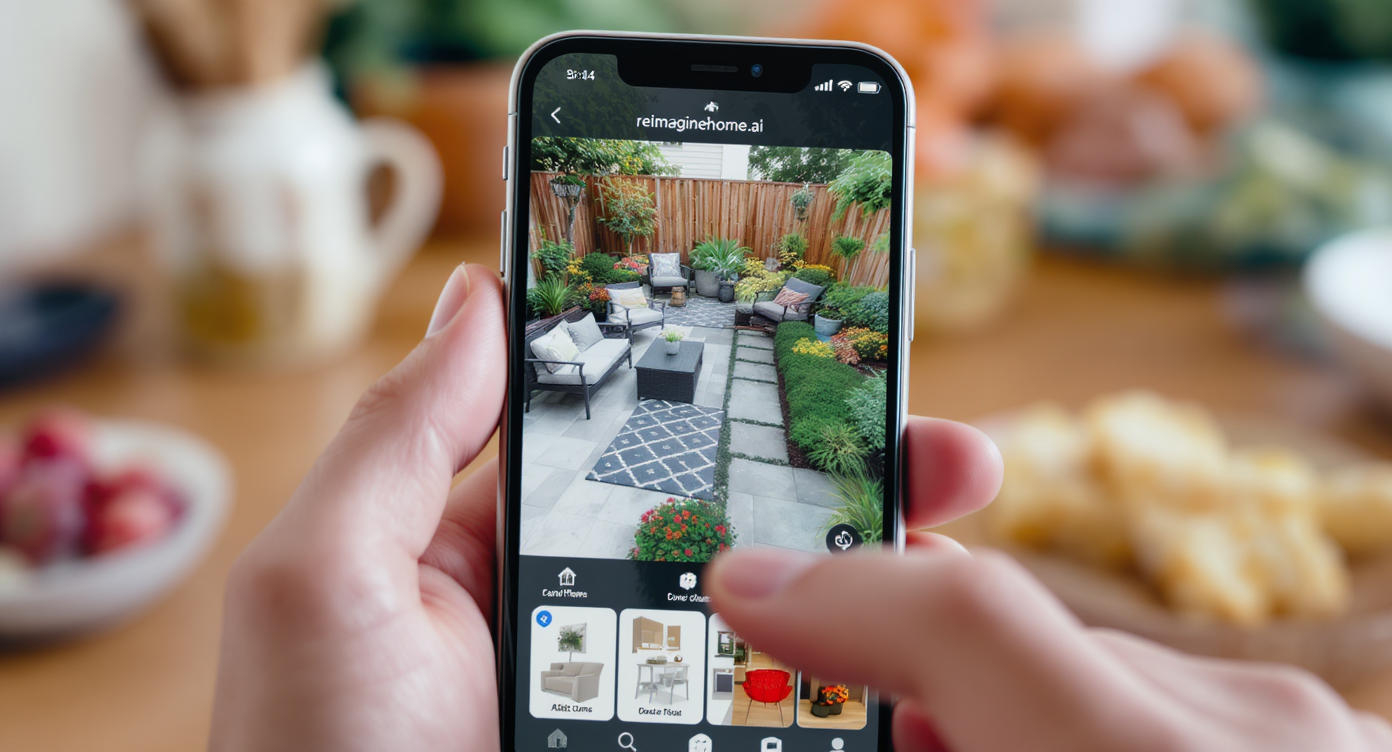
Visualize patios and planting layouts in just 10 minutes with ReimagineHome.ai.
Start with a phone photo. In 10 minutes you can answer the big questions that stall most backyard makeovers. Step‑by‑step in ReimagineHome.ai: 1) Upload your exterior and pick a style—modern, coastal, or classic garden design. 2) Test hardscaping design basics: swap in a stone patio, add a fire pit, or sketch a retaining wall to create terrace levels on a slope. 3) Size the bones: set a 12–14 foot dining zone, a 7 foot fire‑pit clearance, and 36–48 inch walkways that actually fit furniture flow. 4) Compare materials: exposed concrete vs concrete pavers vs natural stone; adjust color and texture to match your siding and light. 5) Layer planting: privacy planting behind seating, evergreen structure, then seasonal color where it counts. 6) Light it: render path lighting at 2700–3000 K and a few soft uplights; preview glare and spill. 7) Save variants: keep 2–3 schemes and share with your contractor to align scope before quoting. Then dive deeper with these visual primers: - See curb appeal upgrades that matter most: https://www.reimaginehome.ai/blogs/front-yard-curb-appeal-ideas?utm_source=blog - Compare the best materials for a backyard patio and fire pit: https://www.reimaginehome.ai/blogs/best-materials-for-backyard-patio-and-fire-pit?utm_source=blog - Learn outdoor lighting basics for a calm, cohesive yard: https://www.reimaginehome.ai/blogs/outdoor-lighting-design-basics?utm_source=blog
1 founder grew from $1k to $1M in revenue—here’s what homeowners can borrow from that playbook

From $1K to $1M: lessons for homeowners from a landscaping founder’s playbook.
A small, disciplined process scales results. One builder began with about $1,000 and a trailer, rented tools until the work paid for equipment, and grew to $250,000 in owned machinery while keeping marketing under $500 by leaning on local search and reputation. For homeowners, the lesson is simple: clarity compounds. - Clear naming drives discovery: a business name with the suburb often ranks better in local maps. For homeowners, this translates to searching with neighborhood terms to find contractors who actually work nearby. - Progress beats perfection: first‑time work can be excellent when expectations are set. If a detail is new, document it, show a visual, and agree on the standard before day one. - Scope and milestones protect everyone: progress payments tied to visible work keep large jobs (say $40k+) moving without strain. - Reliability is currency: polite, on‑time crews earn referrals; that goodwill often matters more than being the cheapest bid. Micro‑story: A homeowner in Melbourne turned a narrow side yard into a cinematic, stone‑lined walkway. Two decisions made it sing—widening it to 42 inches at the pinch point and adding a single cedar screen with jasmine, so the journey felt private without feeling tight.
Visualization Scenario
Upload a dusk photo of your backyard, drop in a 16x20 stone patio with a 7‑foot fire pit clearance, and test 2700 K lighting on the path to your gate. Save two versions—pavers vs exposed concrete—and compare which feels calmer against your siding.
6 quick answers to today’s top landscaping & hardscaping questions
Q1: What is the difference between hardscaping and landscaping? A: Hardscaping is the built environment—patios, retaining walls, steps, driveways. Landscaping (softscaping) is planting, turf, irrigation, and soil. Q2: How wide should a front walk be? A: Plan 36–48 inches minimum; use 60 inches where two people commonly walk side‑by‑side. Q3: What’s a smart payment schedule for larger projects? A: For jobs over $10k, use progress payments such as 20% one week before start, 20% on day one, and the remaining 60% in 2–4 milestone draws. Q4: What are the best materials for a backyard patio and fire pit? A: Concrete pavers, natural stone (like bluestone or travertine), and exposed concrete are durable picks; match texture to your home and climate, and confirm base prep. Q5: How do I design low‑maintenance hardscaping? A: Keep a tight palette (2–3 materials), size paths correctly, slope surfaces 1–2% away from the house, and choose drought‑tolerant privacy planting. Q6: How far in advance should I book a crew? A: Aim for 4–8 weeks; longer schedules tend to slip and create more rescheduling friction.
1 click can de‑risk your next yard decision by testing layouts and materials first
Ready to see your next chapter? One click on ReimagineHome.ai lets you try affordable landscaping ideas, modern landscaping ideas for small front yards, and full backyard makeover options before you commit. Visuals drive better quotes, fewer change orders, and a yard you’ll use every day.
.svg)

.svg)


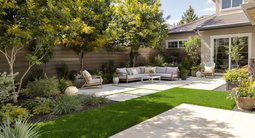
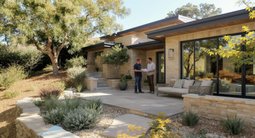


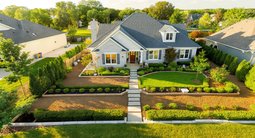
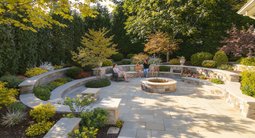


.png)